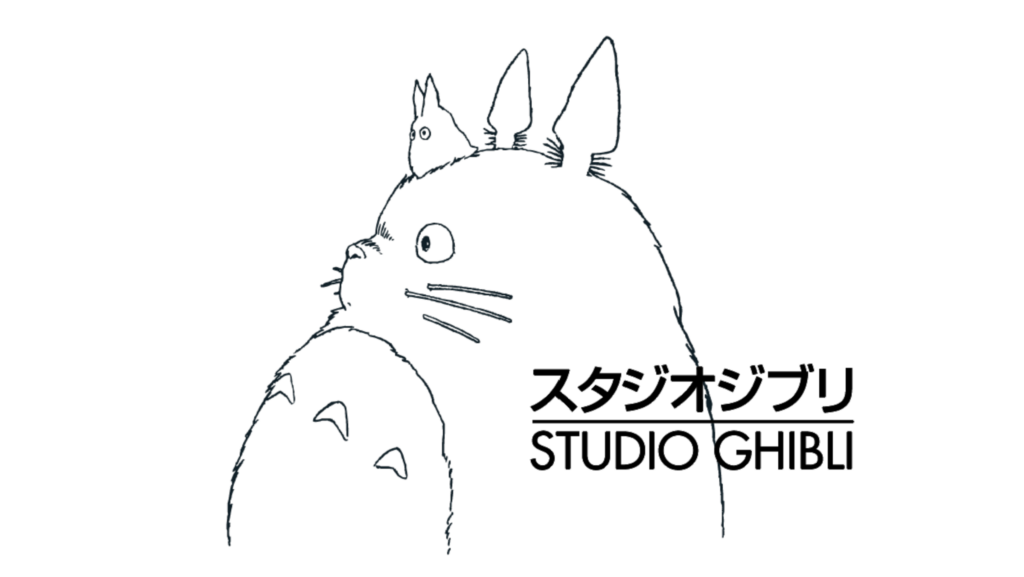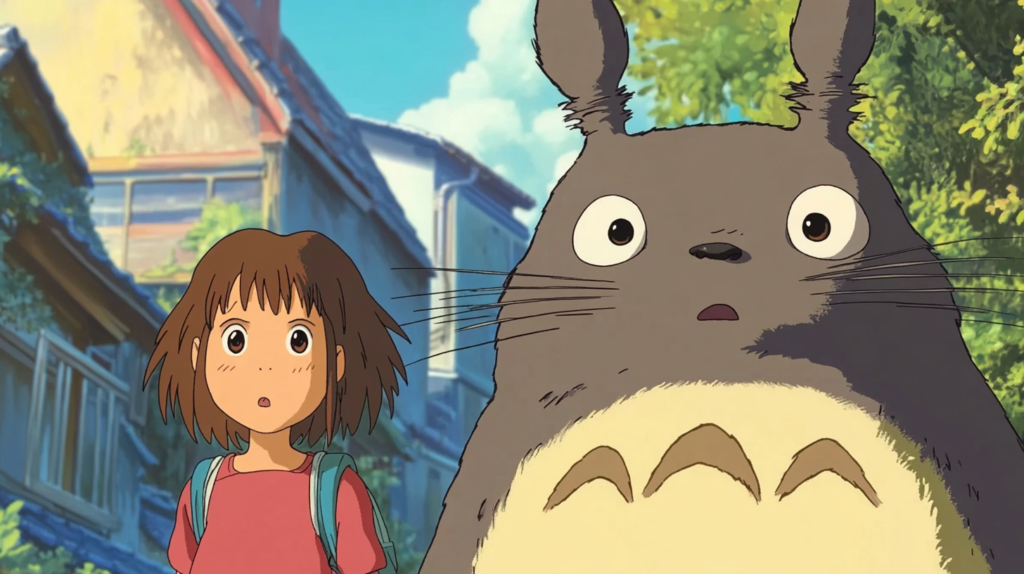Disney vs. Studio Ghibli: The world of animation has been significantly shaped by two giants: Disney and Studio Ghibli. Both studios have created masterpieces that have captivated audiences worldwide, transcending cultural and linguistic barriers. As a cartoonist deeply inspired by the magic of animation, I find it fascinating to explore the similarities and differences between these two iconic studios. This article delves into their histories, artistic styles, storytelling approaches, cultural impacts, and the legacies they’ve built in the world of animation.
Historical Background
Disney: The Birth of an Empire
Founded in 1923 by brothers Walt and Roy O. Disney, the Disney Brothers Cartoon Studio began as a small animation studio producing short films. The release of Snow White and the Seven Dwarfs in 1937 marked Disney’s first full-length animated feature and the world’s first animated feature film in Technicolor.

Key Milestones:
- 1928: Introduction of Mickey Mouse in Steamboat Willie.
- 1950s: Expansion into television with shows like The Mickey Mouse Club.
- 1989-1999: The Disney Renaissance era, producing hits like The Little Mermaid, Beauty and the Beast, and The Lion King.
- 2006-Present: Acquisition of Pixar, Marvel, Lucasfilm, and 21st Century Fox, expanding Disney’s influence.
Studio Ghibli: Crafting Timeless Tales
Established in 1985 by directors Hayao Miyazaki and Isao Takahata, along with producer Toshio Suzuki, Studio Ghibli emerged from the success of Nausicaä of the Valley of the Wind. The studio is renowned for its hand-drawn animation and deeply emotional storytelling.

Key Milestones:
- 1988: Release of My Neighbor Totoro, introducing the studio’s mascot.
- 1997: Princess Mononoke becomes Japan’s highest-grossing film at the time.
- 2001: Spirited Away wins the Academy Award for Best Animated Feature.
- 2013: Hayao Miyazaki announces retirement (though he later returned to work on new projects).
Artistic Styles and Animation Techniques
Disney’s Evolution of Animation
Disney’s animation style has evolved over the decades, embracing new technologies while maintaining a focus on storytelling.
Characteristics:
- Classic Style: Fluid animation with a focus on realism and expressive character movements.
- Innovations: Pioneered techniques like the multiplane camera to create depth.
- Digital Revolution: Transitioned to CGI with films like Toy Story (through Pixar) and Frozen.
Personal Insight:
Disney’s ability to adapt to new technologies while preserving the essence of their storytelling has always inspired me. Their seamless blend of traditional and digital techniques showcases a commitment to pushing the boundaries of animation.
Studio Ghibli’s Handcrafted Beauty
Studio Ghibli is celebrated for its meticulous hand-drawn animation and attention to detail.
Characteristics:
- Artistry: Emphasis on hand-drawn frames, rich landscapes, and intricate backgrounds.
- Atmosphere: Uses visual storytelling to create immersive worlds.
- Consistency: Maintains traditional animation methods, resisting full CGI adoption.
Personal Insight:
The dedication to hand-drawn animation at Studio Ghibli resonates with me deeply. It reflects a passion for the craft that brings warmth and authenticity to their films, inspiring me to value the nuances of traditional art forms.

Storytelling Approaches
Disney’s Universal Themes and Musical Elements
Disney often focuses on universal themes like love, friendship, and the triumph of good over evil, frequently incorporating musical elements.
Approach:
- Fairy Tales and Folklore: Adaptations of classic stories with a Disney twist.
- Musicals: Songs integral to plot development and character expression.
- Clear Morals: Stories often conclude with definitive lessons.
Examples:
- The Lion King: Themes of responsibility and destiny.
- Frozen: Exploration of love and self-acceptance.
Personal Insight:
Disney’s use of music to enhance storytelling has influenced my appreciation for multimedia elements in narratives. Their ability to craft catchy songs that also advance the plot is a hallmark of their films.
Studio Ghibli’s Complex Characters and Environmental Themes
Studio Ghibli’s films often feature complex characters and explore themes like environmentalism, pacifism, and the human condition.
Approach:
- Ambiguous Morality: Characters are multifaceted, often lacking clear-cut heroes or villains.
- Environmentalism: Frequent emphasis on the relationship between humans and nature.
- Cultural Depth: Incorporates Japanese folklore and spirituality.
Examples:
- Princess Mononoke: Conflict between industrialization and nature.
- Spirited Away: A journey of self-discovery in a spirit world.
Personal Insight:
The depth and subtlety in Ghibli’s storytelling encourage viewers to reflect on broader societal issues. This approach has inspired me to infuse my work with layered meanings and to address themes that provoke thought and introspection.
Cultural Impact and Legacy
Disney’s Global Influence
Disney has become a global entertainment powerhouse, impacting various aspects of culture.
Impact:
- Theme Parks: Disney parks worldwide bring the magic of their films to life.
- Merchandising: Extensive product lines influence consumer culture.
- Cross-Generational Appeal: Films enjoyed by both children and adults, creating shared experiences.
Personal Observation:
Disney’s ability to create a pervasive brand that extends beyond films is remarkable. It demonstrates the power of storytelling in building communities and shared cultural touchstones.

Studio Ghibli’s Artistic Reverence
Studio Ghibli has garnered critical acclaim and a dedicated global fan base, despite being less commercially aggressive than Disney.
Impact:
- Critical Acclaim: Numerous awards, including an Academy Award for Spirited Away.
- Cultural Preservation: Promotion of traditional Japanese art and storytelling.
- Inspirational Influence: Inspires artists and filmmakers worldwide with its unique approach.
Personal Observation:
Ghibli’s success without compromising artistic integrity is inspiring. It shows that authenticity and commitment to one’s vision can resonate deeply with audiences globally.
Comparing Philosophies
Commercialism vs. Artistry
- Disney: Balances artistic endeavors with commercial interests, leading to widespread merchandise and franchise opportunities.
- Studio Ghibli: Prioritizes artistic expression over commercial gains, with limited merchandising.
Technological Adoption
- Disney: Embraces new technologies, leading advancements in CGI and animation software.
- Studio Ghibli: Prefers traditional methods, though it selectively uses technology to enhance, not replace, hand-drawn art.
Thematic Focus
- Disney: Often focuses on personal dreams, love stories, and clear moral lessons.
- Studio Ghibli: Explores complex social issues, environmental concerns, and moral ambiguities.
Notable Collaborations and Intersections
While Disney and Studio Ghibli operate differently, they’ve intersected in meaningful ways.
- Distribution Partnership: Disney’s Buena Vista Distribution handled the international distribution of Studio Ghibli films, increasing their global reach.
- Mutual Respect: Creators from both studios have expressed admiration for each other’s work.
Personal Reflection:
This collaboration highlights the possibility of bridging different philosophies for mutual benefit. It underscores the importance of cultural exchange and openness in the arts.
The Future of Animation
Disney’s Direction
- Expansion: Continuing to acquire intellectual properties and expand into streaming with Disney+.
- Innovation: Investing in virtual reality, advanced CGI, and live-action remakes.
Studio Ghibli’s Path
- Continued Creativity: Hayao Miyazaki’s return from retirement hints at new projects.
- Preservation of Tradition: Maintaining a commitment to hand-drawn animation.
Personal Thoughts:
Both studios are evolving in ways that reflect their core values. Disney’s focus on innovation and expansion contrasts with Ghibli’s dedication to tradition and depth. As an artist, I find value in both paths and believe that diversity in approaches enriches the animation landscape.

Disney vs. Studio Ghibli
Disney and Studio Ghibli represent two distinct philosophies in animation, each with its own strengths and contributions to the art form. Disney’s broad appeal and technological advancements have made it a household name worldwide. In contrast, Studio Ghibli’s intimate storytelling and artistic integrity have garnered a devoted following that appreciates depth and nuance.
Final Thoughts:
As a cartoonist, I draw inspiration from both studios. Disney teaches the importance of innovation, broad appeal, and the power of music and humor. Studio Ghibli reminds me of the value of tradition, the beauty of hand-crafted art, and the impact of thoughtful storytelling. The coexistence of these two giants demonstrates that there are multiple paths to creating meaningful and influential art.
Call to Action:
I encourage you to explore the works of both Disney and Studio Ghibli. Reflect on the stories that resonate with you and consider what elements make them special. Share your favorite films and what you’ve learned from them in the comments below. Let’s celebrate the diverse world of animation together.





One Comment